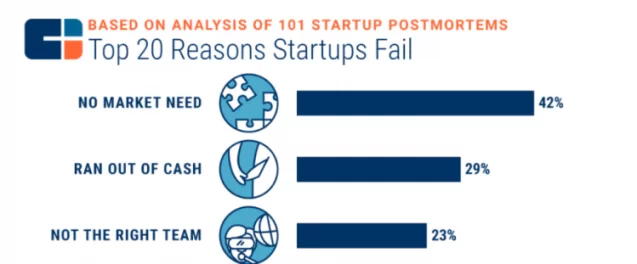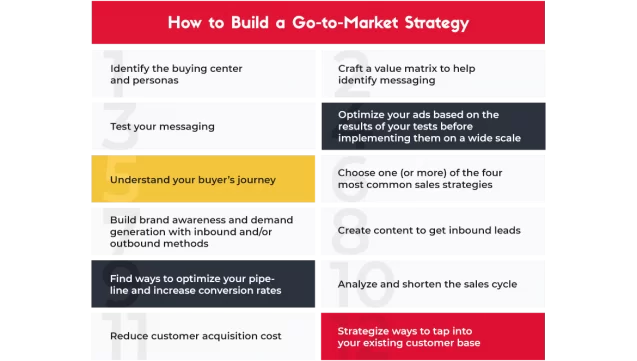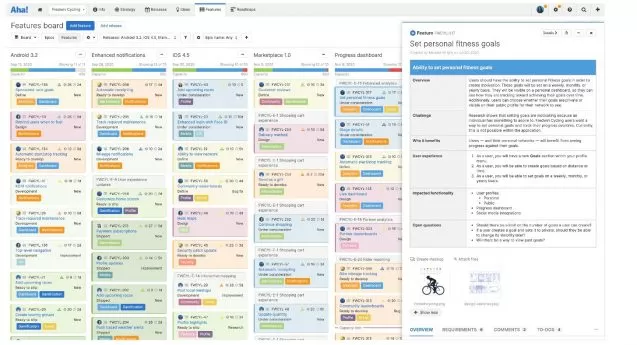“Once an idea has taken hold of the brain it’s almost impossible to eradicate”. This is a quote from Christopher Nolan’s 2010 movie Inception. It is very much applicable to business ideas as well.
Once the idea about a certain service or product visited your brain, you’ve got to figure what is the go-to-market strategy for its promotion. If there is none, you have to find it out as well to try to get rid of an idea, no matter how hard it may turn out to be.
This is a short guide on building a Go-To-Market strategy for products/services for enterprise-sized businesses under modern conditions.
It is based upon the best practices that are met online and on some of the projects Elinext fulfilled for our customers.
Go-To-Market Strategy: What Is It?
When we are talking about tech companies, you should keep in mind, odds are nearly even for yours to make it to five years of existence.
56 percent of startups that were founded back in 2014 have made it to 2018. That is very convincing stats, and numbers are even more drastic for new private sector companies in years after that. You can have a look at their survival rate here.
CbInsights poll failed startups to get to know the reasons behind their failure. In more than 40% of the cases, it is the absence of market need to the product/service of that company.
Source: cbinsights.com
A go-to-market (GTM) strategy resembles a business plan, but of a wider scope and with extra factors.
In its essence, it is a tactical action plan with viable steps that are needed to be made in order to conquer a new market
Gartner’s definition is the following:
“A go-to-market (GTM) strategy is a plan that details how an organization can engage with customers to convince them to buy their product or service and to gain a competitive advantage”.
This is more or less a complex version of the marketing plan with the scope of the core product (service).
How to Deliver GTM
An experienced entrepreneur is able to choose the pain point and message of his/her product, produce the content, ads, apply a sales model for reaching the market.
If you’re already confident you can build a product you can focus on picking a big market and nailing the pain point, the brand, messaging, content, ads, emails, and sales model needed to reach that market.
To launch a product, or service one has to figure the target audience for it. Then there is the hard work of engaging people to get your product.
In general, an actionable GTM plan includes four phases (the classification could differ for different schools of thought):
- Planning
- Roadmapping
- Marketing Strategy Development
- Customer Relationship Establishment
First, it clarifies why you’re launching your product, who it’s for, this stage includes a lot of planning and research.
That helps you define a roadmap for your future product
Then you get to tackle the never-easy job of getting the customer to engage with your product via your marketing (and sales) activities.
The final stage of GTM strategy is in securing outstanding customer experience to the base you already possess (in theory)
As we have already mentioned, there are other ways to build a strategy. Below is the description of two of them:
Hubspot’s author Stefan Groschupf advises the following steps on his way to building GTM strategy:
Text source: hubspot.com
TechTarget identifies the following must-haves for building a GTM strategy. We won’t publish their complete strategy but will recount what they consider GTM must-haves.
Text source: techtarget.com
Phases of Delivering GTM Strategy In Detail
Phase One: Planning
OK, you have your idea. It is time to do your homework. Prepare for the long researches and distributing plans for every part of the operation.
It all starts with assessing the feasibility of delivering the product. If you have the time, money, and enthusiasm to go on, you start to move forward with studying the pain points of your potential audience.
Defining the problem your solution solves. This requires yourself the following set of questions.
- What is the core problem resolved by my potential product?
- How relevant is this problem on the market?
- Does my product offer the solution of the target market better than existing products?
Ideally, if your ideas feats the market, the pain points of the customer should be found. For defining the value of your product, a value matrix is often created. That also would help o send a message to the market in the future.
At the planning phase, you’d have to study the market and buyer persona. Here are the questions you should ask to build the buyer persona:
- Whose problem do your solutions solve?
- What are the core industries for my product?
- Which level of the company do you target?
- Are the potential users aware of the problem you’re solving?
- Does your product look like the best solution to their pain-point?
The last question opens yet another box of Pandora. Which is called the research of demand and feasibility of the project. Studying competitors is vital at this point.
Also, you should assess additional financial risks, connected with legalities, territorial restrictions, but only after you’ve figured your product has chances of living in the current market conditions.
Anything you can do for planning and research of the development of your product goes through this first stage. Seasoned business analysis is crucial for delivering valuable insights that would shape your future product.
Phase Two: Roadmapping
You develop an outline of the ways of development of the product. This is a very individual and industry-dependent stage. There are plenty of solutions for roadmap building on the market.
Below is the screenshot for including new features to a product based on Aha! software.
Source: aha.io
The main question you have to ask yourself while delivering a product roadmap is the following.
How will you develop and introduce a new offering to the market?
At this stage, your ideas receive the first material actionable plan.
We at Elinext have a professional approach for software product engineering that allows us to create high-quality software that competes on and excels in the market. If you have an idea for a product but stumbled upon any mentioned stage, contact us – we will figure the ways we could help you.
Phase Three: Marketing Strategy Development
Marketing strategies of modern SaaS B2B products, including enterprise-sized ones are often based on content, paid ads, and other traditional ways of digital marketing.
We’d like to give you some examples of how this strategy could be built
Cisco had a communication plan for a learning game to put users in the shoes of a telecoms company leader. The case is pretty ancient an overall strategy might not be relevant in today’s environment, but the company released the presentation that includes major details of their GTM strategy.
This Slideshare includes the strategy, tactics, and assets used by the company, including the efforts on social media.
Marketing plans tend to include the following:
- Lead generation
- Content + website
- Inbound/Outbound marketing
- PR strategy
One has to outline the buyer’s journey, develop pricing and distribution strategies and develop your messaging for creating a working marketing strategy.
Phase 4: Customer Relationships Establishment
To illustrate how a great relationship with customers should be established, we should explore large enterprises entering new markets.
A role model is Huawei entered India. They showed by example how to build connections between the company and their customers.
Firstly, they have built R&D and service centres – live facilities in India. They hired mostly local people to show their commitment to the market. They realized that India is the second biggest market in the world, so they constructed the second-largest research center here.
Their positioning was as of “aspirational product” and based their market strategy around that. The main focus was on establishing trustful manufacturer-customer relationships.
Development of the sales funnel and future customer support is built on this stage of development of the Go-To-Market strategy. This phase is crucial for the longevity of the product’s existence on the market.
Also, if your company is quite big, and it has plans to launch a new product, custom-built CRM might serve as a great help in establishing certain processes. It helps increase sales effectiveness, analyze sales, and other ways of customer interaction.
It might not be effective for a small startup, but almost a must-have for an enterprise-sized product company.
Conclusion
This is a very rough picture of the building GTM strategy. It still looks heavy and might overwhelm, but if you do it steadily, step-by-step, your product will successfully enter the market.
Naturally, there are many schools of thought, and all the tips couldn’t be placed in a single blog post, but at least you’ll have a vague idea of what you’ll be dealing with.













